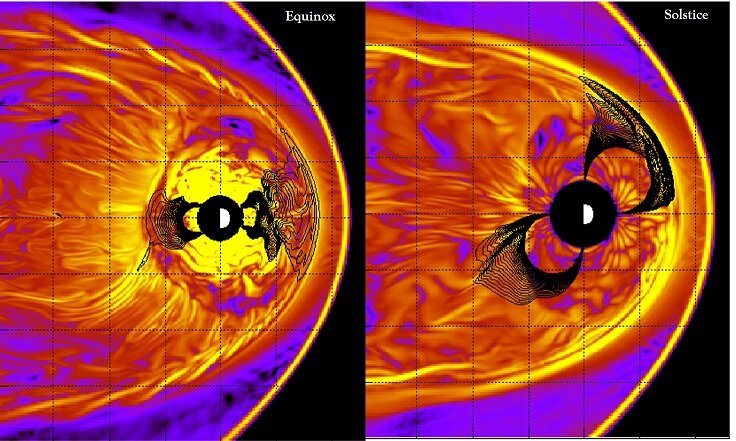Researchers at Embry-Riddle Aeronautical University have discovered new insights into “space waves” that could lead to more accurate space-weather predictions and safer satellite navigation through radiation belts.
Their latest research, published on May 4, 2023, by the journal Nature Communications, shows that seasonal and daily variations in the Earth’s magnetic tilt, toward or away from the sun, can trigger changes in large-wavelength space waves.
These breaking waves, known as Kelvin-Helmholtz waves, occur at the boundary between the solar wind and the Earth’s magnetic shield. The waves happen much more frequently around the spring and fall seasons, researchers reported, while wave activity is poor around summer and winter.
As plasma or solar wind streams from the sun at speeds up to 1 million miles per hour, it pushes energy, mass and momentum toward the planet’s magnetic shield. It also whips up space waves.
Fast-moving solar wind can’t pass directly through the Earth’s magnetic shield, so it thunders along the magnetosphere, propelling Kelvin-Helmholtz waves with massive peaks up to 15,000 kilometers (km) high and 40,000 km long.
2023-05-05 01:30:04
Link from phys.org
